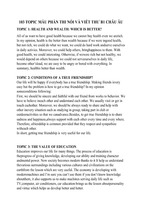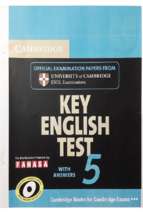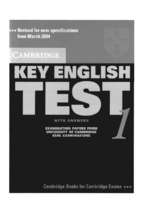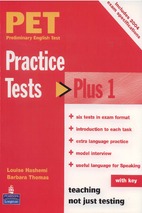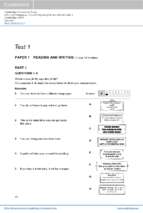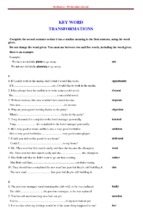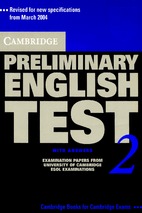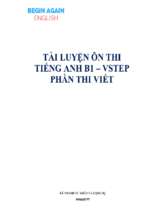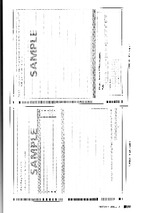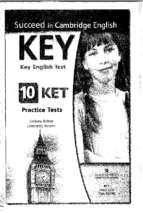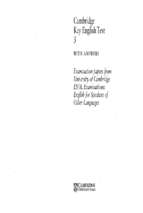VIETNAM NATIONAL UNIVERSITY, HANOI
UNIVERSITY OF LANGUAGES AND INTERNATIONAL STUDIES
FACULTY OF POST-GRADUATE STUDIES
ĐẶNG THANH ĐIỀM
MULTIMODAL METAPHORS IN VIETNAMESE
AND AMERICAN BEVERAGE COMMERCIALS
(Ẩn dụ đa phương tiện trong các quảng cáo đồ uống
của Việt Nam và Hoa Kỳ)
M.A. MINOR PROGRAMME THESIS
Field: English Linguistics
Code: 8220201.01
Hanoi – 2021
VIETNAM NATIONAL UNIVERSITY, HANOI
UNIVERSITY OF LANGUAGES AND INTERNATIONAL STUDIES
FACULTY OF POST-GRADUATE STUDIES
ĐẶNG THANH ĐIỀM
MULTIMODAL METAPHORS IN VIETNAMESE
AND AMERICAN BEVERAGE COMMERCIALS
(Ẩn dụ đa phương tiện trong các quảng cáo đồ uống
của Việt Nam và Hoa Kỳ)
M.A. MINOR PROGRAMME THESIS
Field: English Linguistics
Code: 8220201.01
Supervisor: Nguyễn Thị Minh Tâm, PhD.
Hanoi - 2021
DECLARATION
I certify that the minor thesis entitled “Multimodal metaphors in Vietnamese
and American beverage commercials” is the result of my own research and has not
been submitted partially or wholly to another degree or diploma at any universities
or other institutions.
Hanoi, 2021
Student
Đặng Thanh Điềm
i
ACKNOWLEDGEMENTS
This paper would not have been completed without the support of many
people, to all of whom I am profoundly indebted.
First, I would like to acknowledge my truthful gratitude to my supervisor,
Dr. Nguyễn Thị Minh Tâm, for her valuable comments, constant support and
encouragement.
My special words of thanks are sent to all the lecturers of the Department of
Post-Graduate Studies, University of Languages and International Studies, Vietnam
National University Hanoi, for their useful lectures and materials which are of great
value to my thesis.
My sincere thanks also go to my colleagues in the Faculty of Foreign
Languages and Informatics, Hoa Lu University for their willingness to support me
in my teaching job during the time I conducted the study.
Last but not least, I owe my gratitude to my family for their wholehearted
care and encouragement during the completion of my thesis.
Hanoi, 2021
ii
ABSTRACT
Multimodal metaphor has become a necessary and indispensable stage of
conceptual metaphor research. This new categorized research field of multimodal
metaphor is involved in all aspects of life including advertising, political cartoons,
comics, spoken language, gesture, music, sound and film (Yang, 2015). The study is
an investigation into the use of multimodal metaphors in Vietnamese and American
beverage commercials. Twenty-four selected videos from eight beer brands (four
for each promotional culture) are analyzed via the processes of realization (based on
the analytical tables) to specify the usage of modes and possible metaphorical
meaning in each commercial; interpretation to clarify the metaphorical themes,
modality usage and message conveyed; and explanation to discuss the similarities
and differences of the utilization of metaphors in these advertisements (under four
criteria). The results of the data analysis indicate that multimodal metaphor is
employed in all Vietnamese and American commercials with six common source
domains. All the three modes (visual, verbal and sonic) are in harmonious
combinations to cue the domains despite the unequal distribution and the variety of
modality patterns. The visual element is the most frequently used mode while sonic
mode accounts for the least involvement in the construction of metaphors in the
videos. The study also pinpoints the similarities and divergences between the usage
of metaphors in the corpus regarding the choices of source domains, the frequency
of modality, the focus of conceptualization and the selling point of the product.
iii
TABLE OF CONTENTS
DECLARATION .......................................................................................................i
ACKNOWLEDGEMENTS .................................................................................... ii
ABSTRACT ............................................................................................................ iii
LIST OF TABLES ................................................................................................ vii
LIST OF FIGURES ............................................................................................. viii
CHAPTER 1: INTRODUCTION ........................................................................... 1
1.1. Rationale of the study.......................................................................................... 1
1.2. Aims and objectives of the study ........................................................................ 2
1.3. Research questions .............................................................................................. 2
1.4. Scope of the study ............................................................................................... 3
1.5. Methods of the study ........................................................................................... 3
1.6. Significance of the study ..................................................................................... 4
1.7. Organization of the study .................................................................................... 4
CHAPTER 2: LITERATURE REVIEW ............................................................... 5
2.1. An introduction to Metaphor ............................................................................... 5
2.1.1. Metaphor in traditional linguistics ................................................................... 5
2.1.2. Metaphor in cognitive linguistics ..................................................................... 6
2.1.3. Features of conceptual metaphor ................................................................... 11
2.2. Multimodal metaphor ........................................................................................ 14
2.2.1. From pictorial to multimodal metaphor ......................................................... 14
2.2.2. Modes in multimodal metaphor ..................................................................... 15
2.2.3. Significance of multimodal metaphor ............................................................ 17
2.2.4. Source domain choices and cultural influences ............................................. 18
2.3. Vietnamese culture and American culture ........................................................ 20
2.4. Advertising ........................................................................................................ 23
2.4.1. Definition of advertising ................................................................................ 23
2.4.2. Features of advertising from linguistic perspective ....................................... 23
iv
2.4.3. Classification of advertising ........................................................................... 24
2.4.4. Beverage commercials ................................................................................... 25
2.5. Review of previous studies ............................................................................... 26
2.5.1. Previous studies overseas ............................................................................... 26
2.5.2. Previous studies in Vietnam ........................................................................... 28
2.6. Summary ........................................................................................................... 29
CHAPTER 3: METHODOLOGY ........................................................................ 30
3.1. The corpus ......................................................................................................... 30
3.2. Methods of the study ......................................................................................... 30
3.3. Analytical framework ........................................................................................ 35
3.4. Data analysis procedure .................................................................................... 37
3.5. Summary ........................................................................................................... 38
CHAPTER 4: DATA ANALYSIS ........................................................................ 39
4.1. The use of multimodal metaphors in Vietnamese commercials ....................... 39
4.1.1. The choices of source domains ...................................................................... 39
4.1.2. Multimodal metaphors in Vietnamese commercials ...................................... 40
4.1.3. The frequency of modality in Vietnamese commercials ............................... 46
4.2. The use of multimodal metaphors in American commercials .......................... 50
4.2.1. The choices of source domains ...................................................................... 50
4.2.2. Multimodal metaphors in American commercials ......................................... 50
4.2.3. The frequency of modality in American commercials .................................. 56
4.3. Summary ........................................................................................................... 59
CHAPTER 5: FINDINGS AND DISCUSSIONS ................................................ 60
5.1.The use of multimodal metaphors in Vietnamese and American beverage
commercials ............................................................................................................. 60
5.2.The similarities and differences in the use of multimodal metaphors in
Vietnamese and American beverage commercials .................................................. 65
5.2.1. The choices of source domains ...................................................................... 65
5.2.2. The frequency of modality ............................................................................. 66
v
5.2.3. The focus of conceptualization ...................................................................... 70
5.2.4. The selling points of the products .................................................................. 77
5.3. Summary ........................................................................................................... 78
CHAPTER 6: CONCLUSION .............................................................................. 79
6.1. Recapitulation ................................................................................................... 79
6.2. Concluding remarks .......................................................................................... 80
6.3. Implications of the study ................................................................................... 82
6.4. Limitations of the study .................................................................................... 82
6.5. Suggestions for further research ........................................................................ 83
REFERENCES ....................................................................................................... 84
APPENDICES .......................................................................................................... I
APPENDIX 1 ............................................................................................................ I
APPENDIX 2 ........................................................................................................... II
APPENDIX 3 ....................................................................................................... VIII
vi
LIST OF TABLES
Table 2.1: The mappings of ARGUMENT IS WAR ................................................. 9
Table 2.2: The mappings of LIFE IS A JOURNEY ................................................ 12
Table 3.1: Sample of the analytical table ................................................................. 36
Table 4.1: List of source domains in Vietnamese commercials .............................. 39
Table 4.2: The mappings of A DRINK IS A HUMAN ........................................... 41
Table 4.3: The mappings of A DRINK IS A SOURCE OF FUN AND
REFRESHMENT ..................................................................................................... 42
Table 4.4: The mappings of A DRINK IS A SYMBOL OF A NATION/
HOMELAND ........................................................................................................... 43
Table 4.5: The mappings of A DRINK IS A FRIEND ............................................ 43
Table 4.6: The mappings of A DRINK IS A GIFT ................................................. 44
Table 4.7: The mappings of A DRINK IS A CONTAINER OF HAPPINESS ....... 44
Table 4.8: The mappings of A DRINK IS A MATCHMAKER ............................. 45
Table 4.9: The mappings of A DRINK IS A JOURNEY ........................................ 46
Table 4.10: The mappings of A DRINK IS A SOURCE OF ENERGY ................. 46
Table 4.11: Modes representing TARGET DOMAIN in Vietnamese commercials .... 47
Table 4.12: Modes representing SOURCE DOMAIN in Vietnamese commercials ...... 49
Table 4.13: List of source domains in American commercials 50
Table 4.14: The mappings of A DRINK IS A SOURCE OF FUN AND
REFRESHMENT ..................................................................................................... 51
Table 4.15: The mappings of A DRINK IS A FRIEND .......................................... 52
Table 4.16: The mappings of A DRINK IS A CONTAINER OF HAPPINESS ..... 53
Table 4.17: The mappings of A DRINK IS A SOURCE OF ENERGY ................. 54
Table 4.18: The mappings of A DRINK IS A HUMAN ......................................... 55
Table 4.19: The mappings of A DRINK IS A SYMBOL OF A NATION ............. 56
Table 4.20: The mappings of A DRINK IS A REWARD ....................................... 56
Table 4.21: Modes representing TARGET DOMAIN in American commercials .. 57
Table 4.22: Modes representing SOURCE DOMAIN in American commercials .. 58
Table 5.1: The frequency of modality (domain-based) ............................................ 63
vii
LIST OF FIGURES
Figure 2.1: Subdivision of modes (Forceville, 2007: 20) ........................................ 16
Figure 2.2: Cultural dimensions of Vietnam, compared to Japan and the US ......... 21
Figure 3.1: The study’s analytical framework ......................................................... 37
Figure 3.2: Data analysis procedure ......................................................................... 38
Figure 4.1: Modality representing TARGET DOMAIN in Vietnamese ads ........... 48
Figure 4.2: Modality representing SOURCE DOMAIN in Vietnamese ads ........... 49
Figure 4.3: Modality representing TARGET DOMAIN in American ads .............. 58
Figure 4.4: Modality representing SOURCE DOMAIN in American ads .............. 59
Figure 5.1: Metaphors and times of appearance in both sets of commercials ......... 60
Figure 5.2: The frequency of modality (origin-based) ............................................. 64
Figure 5.3: The choices of source domains in both sets of commercials ................ 65
Figure 5.4: The frequency of modality in Vietnamese ads ...................................... 68
Figure 5.5: The frequency of modality in American ads ......................................... 68
Figure 5.6: Screenshot from V7 Figure 5.7: Screenshot from V12 ........................ 75
Figure 5.8: Screenshot from A11 Figure 5.9: Screenshot from A8 ........................ 75
viii
CHAPTER 1: INTRODUCTION
1.1. Rationale of the study
Understandings of metaphor have been greatly changed over time, especially
with the very first introduction of Conceptual Metaphor Theory in “Metaphor We
Live By” by Lakoff and Johnson (1980). Metaphor used to be perceived as a
rhetorical device or a kind of decorative addition to the ordinary plain language in
traditional linguistics, (Saeed, 2003). However, in the light of cognitive linguistics
approach in the 19th century, metaphor is conceptualized ubiquitous in everyday
language as a way to understand or experience things through other things. In this
way, metaphor is therefore “a means of structuring our conceptual system”.
Advocates of Conceptual Metaphor Theory assert that metaphor is an invaluable
approach to conceive the world from the specific to the abstract, the known to the
unknown and the outside to the inside. From the same perspectives, numerous
studies have been conducted to prove the values of metaphor in “mind developing,
conceptual widening and even society progressing” (Yang, 2015).
Starting from Conceptual Metaphor Theory, discussions on whether the
occurrence of metaphor is restricted to language have been provoked. In fact, the
essence of language for the construal and interpretation of metaphor is not
obligatory (Forceville, C. in Gibbs, 2003). Therefore, apart from verbal metaphors,
non-verbal ones have gradually gained greater attention from researchers.
Human communication is by and large multi-modal rather than mono-modal
in nature (Lantolf and Bobrova, 2012). Multimodal metaphor, as a form of nonverbal type, first presented by Forceville (2008) belongs to almost all social life of
human beings such as advertising, political cartoons, comics, animation, spoken
language, co-speech gesture, music, sound and film (Yang, 2015). Research of
multimodal metaphor has been done to cover these various categories and multimodes of expressing (Forceville, 1996; Gibson, 1979; Cienki, 2011; Koller, 2009;
Yang and Qiu, 2014; Yu, 2013; Urios-Aparisi, 2009).
1
There have been a number of studies on the extent to which a metaphor is
not only embodied but also governed by the cultural or professional community in
which it functions (Yang, 2015). Regarding Vietnamese versus American cultures,
several research has been carried out to investigate metaphors in Vietnamese and
American advertisements. However, the advertisements are analyzed verbally and it
seems that so far, little attention has been paid to the use of multimodal metaphor in
advertisements – in particular in beverage commercials.
All of aforementioned aspects and discussions are the inspiration for the
paper entitled “Multimodal metaphors in Vietnamese and American beverage
commercials”, which attempts to present an analysis of multimodal metaphors used
in Vietnamese and American beverage commercials and make some comparisons
between the two groups of data.
1.2. Aims and objectives of the study
The bilingual comparative study aims at providing a better understanding of
the use of multimodal metaphors in Vietnamese and American beverage
commercials, based on metaphor theories and analyses developed by Lakoff and
Johnson (1980) and Forceville (1996, 2008, 2009).
The overall aim is specified into the following objectives:
(1) To investigate multimodal metaphors embedded in the chosen adverts
and the relationships between their target and source domains in regards
of their structural mappings, messages and entailments.
(2) To make a comparison on the representation and interpretation of
metaphors between the two groups of commercials.
1.3. Research questions
The study raises the following research questions:
(1) How are multimodal metaphors used in Vietnamese and English
beverage commercials?
(2) What are the similarities and differences in the use of multimodal
metaphors in Vietnamese and American beverage commercials?
2
The first question deals with the process of metaphorical realization in
Vietnamese and English commercials for nationally distributed beverages,
addressing the process of interpretation via the mappings or internal structures.
Whereas, the second question focuses on a comparative analysis between metaphors
in the two corpora mainly in terms of source domain choices, mode frequencies, the
focus of conceptualization and the selling points of the products.
1.4. Scope of the study
The research focuses on analyzing multimodal metaphors in which the target
and source domains are rendered exclusively in different systems (visual, verbal and
sonic modes). Therefore, other types of conceptual metaphors such as verbal or
pictorial metaphors are not under the research’s investigation.
In order to solve the research questions, data are collected from 24
advertising videos (released in the years between 2016 and 2018) of 8 beer brands
from Vietnam (Huda, Tiger, Saigon and 333) and America (Budweiser, Bud Light,
Coors Light and Miller Lite), so commercials of other products or from different
countries would be beyond the scope. Besides, the study only exploits beverage
commercials in Vietnamese for Vietnamese people and those in English for
American consumers. Hence, commercials with features different from what are
described above are not the data for analysis in the study.
1.5. Methods of the study
The study firstly exploits the combination of description and explanation to
analyze metaphors in the commercials. Each commercial analysis leads to a
concluding description and an interpretation of the metaphor embedded. Secondly,
all the commercials are then compared and contrasted in a comparative approach to
justify their similarities and differences in using multimodal metaphor as a way to
promote the brands and products. Thus, three major steps include (1) Realization to
identify the modality usage in each video; (2) Interpretation to explain metaphorical
themes, meanings and messages; and (3) Explanation to clarify the similarities and
differences of the use of metaphors from the data.
3
1.6. Significance of the study
Theoretically, the study is expected to testify and supplement the relative
points of Conceptual Metaphor Theory with multimodal data. Also, the adaptation
and exploitation of a theoretical framework to describe distinctive features
involving visual and sonic features besides verbal languages hopefully contributes
to the improvement of theoretical system in multimodal metaphor research.
In terms of practice, the findings of this study can be used as a reference for
linguists and those who are interested in conceptual metaphor and multimodal
metaphor. The study suggests an extension into future analyses of multimodal
metaphor in other areas (products) and genres (cartoon, film, sculpture, gestures,
etc.). Moreover, teachers and experts also gain benefits in designing learning
materials in the contemporary trends of multimodal literacy with the diverse and
interconnected modes and media (Heydon and O’Neill, 2016).
1.7. Organization of the study
The study consists of six chapters. Chapter 1 (Introduction) presents the
rationale, aims and objectives, research questions, scope, significance and design of
the study. Chapter 2 (Literature Review) reviews theoretical issues related to
metaphor, multimodal metaphor, Vietnamese versus American cultures, advertising
as well as the research gaps from the analysis of previous studies. Chapter 3
(Methodology) presents the methodology of the study, including the study’s source
of data, the methods applied, the analytical framework and the whole data analysis
procedure. The fourth chapter, Data Analysis, describes the analysis of data in
details, including the choices of source domains and multimodal metaphors in two
series of commercials (Vietnamese and American).
Findings and Discussions gives the findings and provides a thorough
discussion of these findings. Answers for the research questions are also presented
in this chapter. The last chapter (Conclusion) summarizes the main issues and gives
concluding remarks of the study. The limitations as well as some suggestions for
further research are also discussed in this part.
4
CHAPTER 2: LITERATURE REVIEW
2.1. An introduction to Metaphor
2.1.1. Metaphor in traditional linguistics
Although metaphor in traditional view has been strongly challenged by a
large number of researchers, especially cognitive linguists, it is still a good start to
mention this so-called traditional notion of metaphor in order to understand the
longevity of metaphor research and interests over centuries.
According to Saeed (2003), metaphor in traditional approaches is the most
important form of figurative or non-literal language use in comparison with literal
language. Also, it is the most sophisticated form in literary or poetic language as
defined by the classic and the romantic views. According to the classic view mainly
by Aristotle (1954, 1982, 2001), metaphor is considered as (1) a kind of decorative
addition to ordinary plain languages, (2) a rhetorical device to be used at certain
times to gain certain effects, (3) requires special forms of interpretation from
listeners or readers and (4) a departure from literal language, detected as anomalous
by the hearer, who then has to employ some strategies to construct the speaker’s
intended meaning. In this classic view, “where the utterance is defective if taken
literally, look for an utterance meaning that differs from sentence meaning” (Searle,
1979). The romantic view is associated with the 18th and 19th century romantic
views of imagination (cognitive semantics). In this approach, metaphor is an
integral to language and thought as a way of experiencing the world, and an
evidence of the role of imagination in conceptualizing and reasoning. From this
perspective, all language is metaphorical and there should be no distinction between
literal and figurative language.
For example, the metaphor ACHILLES IS A LION (cited in Evans and
Green, 2006: 293) is different from simile (“Achilles is as brave as a lion” or
“Achilles is brave, as a lion”) in the way that the two domains’ resemblance has no
clear representation in literal language use (without “like” or “as”).
5
To sum up, metaphor in traditional view involves the identification of
resemblances and causes a transference, where properties are transferred from one
concept to another. The understandings of metaphor were also changed from the
classic to the romantic views, from being a decorative addition to an integral part of
language and thought.
2.1.2. Metaphor in cognitive linguistics
2.1.2.1. Cognitive Linguistics
Cognitive linguistics has certain distinctive features and differentiations from
other approaches to linguistic studies. Rooted in the emergence of modern cognitive
science, it began in the early 1970s out of opposition to the prevailing formal
linguistic approaches (Evans and Green, 2006). The establishment of the
International Cognitive Linguistics and the journal Cognitive Linguistics in 1989/90
“marked the birth of cognitive linguistics as a broadly grounded, self-conscious
intellectual movement” (Langacker, 2002: xv). Since then, a great deal of research
and development has gone under the name of cognitive linguistics. According to
Bielak (2011), a large proportion of the research has been devoted to the application
of cognitive linguistics to foreign language pedagogy. Cognitive linguistics has not
only focused on semantics but also syntax, morphology and other areas of
linguistics such as language acquisition, phonology and historical linguistics (Croft
and Cruse, 2004). This gives an idea of what cognitive linguistics might contribute
to language learning and teaching. In addition, there are numerous claims that
cognitive linguistics is able to offer solutions to certain problems and dilemmas
encountered in Applied Linguistics and Foreign Language Teaching (Beilak, 2011).
Cognitive linguistics is defined as an approach to the study of language,
based on how human beings perceive, categorize and conceptualize the world as
well as how they express their perception, categorization and conceptualization
through language (Croft and Cruse, 2004). It is a school of thought and practice,
concerned with investigating the relationship between human language, human
mind and socio-physical experiences (Lee, 2001).
6
According to Evan and Green (2006), cognitive linguistics is a powerful
approach to the study of not only language but also conceptual systems, human
cognition and general meaning construction. Cognitive linguists argue that language
is governed by general cognitive principles, rather than by special-purpose language
module (Talmy, 2000).
The most important way in which cognitive linguistics differs from other
approaches to the study of language (structuralism, functionalism, systemic
linguistic, to name but a few) is that language is assumed to reflect certain
fundamental properties and design features of human mind. Evans (2007) argues
that linguistic knowledge, then, involves not just knowledge of language but
knowledge of our experience of the world as mediated by the language.
From the definition of cognitive linguistics, it can be understood that
cognitive linguistics has two focuses. The first focus is on the way in which
knowledge representation is organized in the mind. Cognitive linguists hold that
language reflects cognitive organization; consequently, cognitive linguistics deploys
language in order to investigate conceptual structure (Croft and Cruse, 2004). A
clear example of this is the conceptual metaphor theory. Conceptual metaphors are
claimed to be units of knowledge representation in the mind rather than being
linguistic in nature (Kövecses, 2017). Yet as language reflects conceptual
organization, their existence is revealed by patterns in language. Patterns in
language reveal patterns in the mind (Taylor, 2002). The second focus is on
language. After all, cognitive linguists, like other linguists, study language for its
own sake. However, language is held to reflect general aspects of cognition.
Therefore, language cannot be artificially separated from the conceptual phenomena
that it, in large parts, reflects and is shaped by (Talmy, 2000).
2.1.2.2. Conceptual Metaphor
The introduction and development of cognitive linguistics have created
certain changes in the conceptualization of metaphor in comparison with what was
perceived about metaphor in traditional approaches.
7
As an extension of the romantic view, metaphor in cognitive perspective is
considered ubiquitous in ordinary language. However, there are also nonmetaphorical concepts (NOT all language is metaphorical as in romantic views)
(Saeed, 2003).
Cognitive metaphor or conceptual metaphor allows us to understand one
domain of experience in terms of another. To serve this function, there must be
some grounding, some concepts that are not completely understood via metaphor to
serve as source domains (Lakoff and Turner, 1989). For example, the metaphors
HAPPY IS UP and SAD IS DOWN seem to be based on our bodily experiences of
lying down and getting up and their associations with consciousness, heath or
power. Using language like this, speakers are not adding rhetorical or poetic
flourishes to their language, but this displays how we conceive of happiness, health
and other abstract notions (Lakoff and Johnson, 1980).
Ungerer and Schmid (1996: 120) reinforce that the structural mapping
process from a source domain to a target domain in metaphor allows the
conceptualization of abstract phenomena by replying on human’s experience and
stored knowledge of the concrete world. One typical example to illustrate this
theory is ARGUMENT IS WAR metaphor (Lakoff and Johnson, 1980: 4), which is
reflected through such metaphorical expressions as:
- “He attacked every weak point in my argument”;
- “His criticism was right on target”;
- “If you use that strategy, he’ll wipe you out” or
- “He shot down all of my arguments”.
(Lakoff and Johnson, 1980:4)
It is absolutely not the physical battle that people are involved in; however,
there exists a verbal battle and what people do while arguing is determined by the
conceptualization of war. Although metaphorical expressions can be diverse, they
are only mapped from one target domain onto one source domain. In this way, it
can be seen that the two concepts ARGUMENT and WAR are metaphorically
structured in a systematic way.
8
Table 2.1: The mappings of ARGUMENT IS WAR
Source domain: WAR
Opponents/ enemies
Military conflict
Actions: attack, defend, win, lose
Tools: weapons
Target domain: ARGUMENT
People of the opposite standpoint
Verbal conflict
Actions: exchange viewpoints/claims
Tools: verbal expressions, utterances…
(Adapted from Lakoff and Johnson, 1980)
Phan Thị Hương (2011) presents a detailed discussion on the metaphorical
expressions of the metaphor LOVE IS A JOURNEY.
- “Look how far we’ve come;
- “We are at a crossroad;
- “We can’t turn back now”.
(Lakoff and Johnson, 1980: 6)
First, passengers in a journey keep going in order to reach a targeted
destination. Metaphorically, lovers need to make progress to achieve their shared
purpose of getting along with each other. Second, at a crossroad, passengers may be
confused of which way to take. Lovers may encounter a similar situation when they
are bewildered at the decision of being together or separating. Lastly, in a love
relationship, sometimes the commitment of being together leads to their not turning
back despite their dissatisfaction. This resembles the situation of a vehicle which
cannot turn back on a one-way road.
These explanations prove that the metaphor is not poetic or rhetorical but
“literal”; it is instead a fundamental and ubiquitous way of structuring the
awareness of our social, emotional and intellectual experience. They are the
metaphor we live by; they construct reality, change our views of life and govern
how we act in the world (Lakoff and Johnson, 1980).
In short, cognitive metaphor or conceptual metaphor is considered not
merely a means of communication but also a means of cognition, reflecting the
mechanism by which people understand and explain about the real world.
2.1.2.3. Internal structure of metaphor
Metaphor involves the identification of resemblances and causes
transference, where properties are transferred from one concept to another. Two
9
main concepts include “target domain” which is the starting point or described
concept and “source domain” which is the comparison concept or analogy.
Langacker (2002) defines “domain” as a coherent area of conceptualization relative
to which semantic units may be characterized. Then, the general formula for the
construction of the conceptual metaphor is as follows:
TARGET DOMAIN IS SOURCE DOMAIN
There exist underlying conceptual mappings in which people metaphorically
conceptualize TARGET DOMAIN in terms of SOURCE DOMAIN. Regarding
these two domains of metaphor, the target domain is abstract, less directly
experienced, and less known (for example, time, causation, spatial orientation,
ideas, emotions, concepts of understanding) while the source one is concrete,
physical, more directly experienced and better known (for example embodied
experiences). Lakoff and Turner (1989) assumes that the metaphorical mapping of
the source and target domain structures is composed of several components,
including the slots, the relationship, the attributes and the knowledge of the source
domain, which are mapped onto the target one.
Kövecses (2002: 18-28) makes a list of the most common source domains in
conceptual metaphor, including HUMAN BODY, HEALTH AND ILLNESS,
ANIMALS, PLANTS, BUILDINGS AND CONSTRUCTION, MACHINES,
MONEY AND BUSINESS, COOKING AND FOOD, FORCES, etc. Whereas, the
most popular target domains consist of EMOTION, DESIRE, MORALITY,
THOUGHT, POLITICS, ECONOMY, HUMAN RELATIONSHIP, LIFE AND
DEATH, TIME, RELIGION, etc. These concepts are the basis for the investigation
of the conceptual domains of the advertised products in this study. These suggested
source and target domains help with the construction of the metaphors’ internal
structures as well as their mappings.
2.1.2.4. Conceptual metaphor groundings
One of the key differences between traditional and cognitive approaches to
metaphor is the essence of similarity between the two domains. Metaphor in
10
- Xem thêm -


